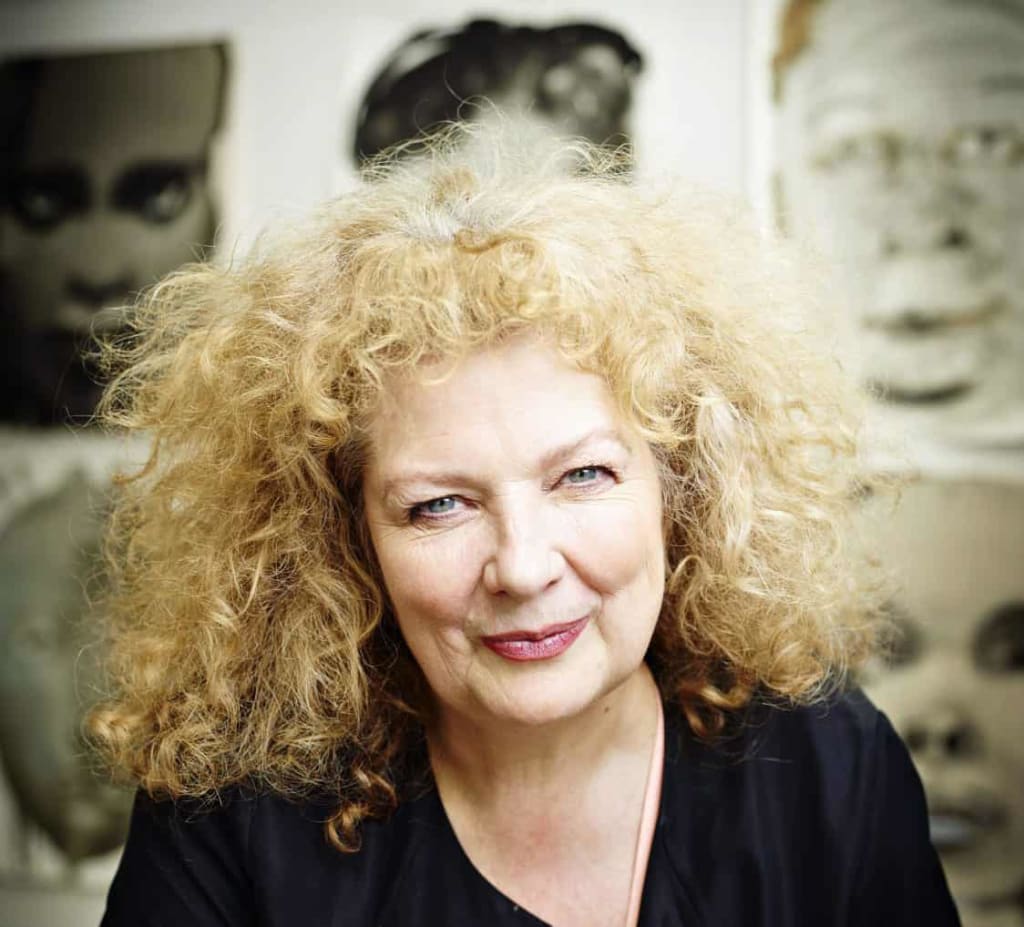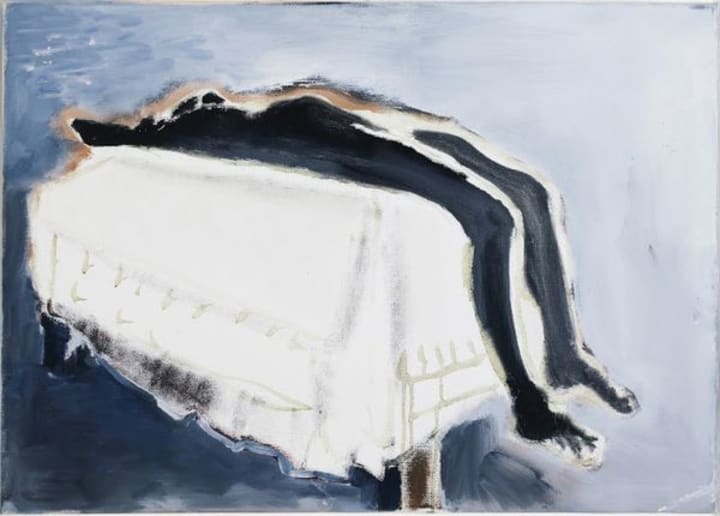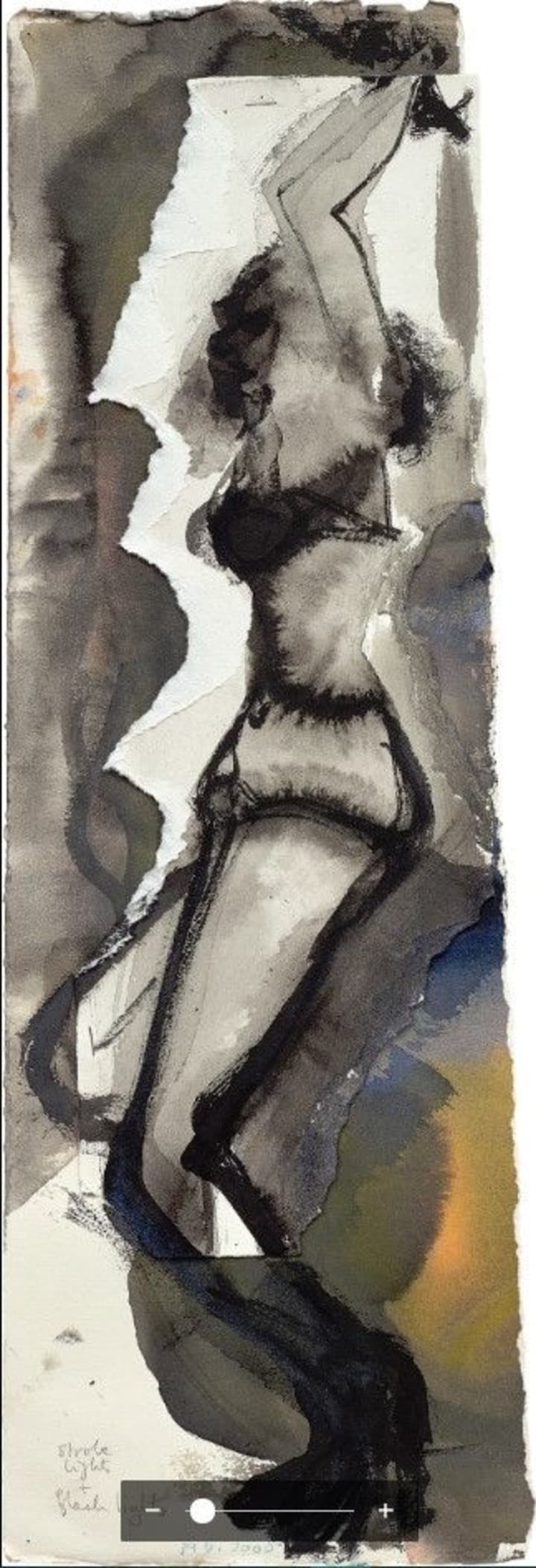Who is Marlene Dumas?
First article in my Who Is Series. Uncovering the lives of unknown women with colorful lives.

The experience of the woman in artist movements are often shared from the lens of a man. Men decide how a woman’s bodies should be in form, the acts that they perform, and the features to accentuate. It has been my experience that when women create art it comes from a deeper, more humanitarian space. We use art to balance the drill of our lives where everyone needs us. The outlet to soothe our traumas or in many art movements for artistic scholars the challenge to the male gaze.
During the Neo Expressionism Era in the early 80’s these paintings & sculptures used “figuration in expressive, gestural, and sometimes brashly aggressive works”(Artsy, Neo-Expressionism) Marlene Dumas was one of the women that grew popularity during that era that contrasted Conceptual Art of the 1970s.
Marlene Dumas was born in Cape Town, South Africa of Dutch lineage August 3rd, 1953.

Dumas along with her two older brothers, mother, and father grew up in the apartheid subjected outskirt of the Kuils River. They even had a house maid who was colored in which she couldn’t eat at the same dinner table. Dumas grew up largely around the race segregation, but expected for the races to mix.
In Dumas isolated home life she used drawing cartoons of little girls and collecting photographs for excitement. Her father who owned the vineyard Jacobsda passed away of liver disease in 1966. After her fathers passing Dumas came into more awareness of politics and the tensions with South Africans wanting to end apartheid often being called terrorists and communists.

In Dumas early training she attended the English speaking school “Michaelis School of Fine Arts”. Dumas started to learn the power of images to connect us to the present. She began to paint around 1973 with subjects around her political concerns and about being a white South African woman. In 1976 Dumas moved to the Netherlands after acquiring a two-year scholarship to Ateliers 63 art school. Here she discovered a host of images without censorship.
In 1985 Dumas decision to use oil as her medium was a shift in her path towards success. To find her subjects Dumas used newspaper clippings, film stills, and magazines. She works in a variety of themes including prostitution, love, death, and war. She is the most known for her portraits called “tronies” that use intense expressiveness. Her style is described as “lending a sense of erotic messiness or surreal creaminess just verging on the border of reality and illusion”
Her work is known to be provocative, engaging, disturbing, and expensive! One of her paintings called the Visitor sold for 63 million dollars. Her painting the Visitor depicts a group of prostitutes with their backs turned to us while viewing an open door. The women in the painting seem to be waiting for customers as they anticipate money or how they will attain it from the people coming through the door.

Now I will list a few of her paintings that spoke to me. These will show you how important it is for women to make art and how we speak to deep social issues where we often overlook or take part in.

Dumas created Waiting ( for Meaning) was the sister piece of Losing ( her Meaning) showing her fixation on the female nude. The work shows a reclining female with no romantic interest. She is safe and naked with her chest facing outwards. This work is important to show a female belonging to her body. She is existing and free to make her next choice on her own.

In Strobe Lights + Flash Lights Dumas renders bleeding pools of paint to capture the movement of the figure. For context, the figure shown is one of the many women that Dumas took photographs of from 1998-2000. While visiting the red-light district in Amsterdam she captured working women. Some of my own personal favorite works of art show women in positions of power. There is a business decision that women make in every job including selling of themselves. It’s a woman’s choice to perform, and in that respect Dumas is showing freedom.

As a white South African woman Dumas understood the fight for racial equality. Dumas represents virtue but as an ambiguous girl. It appears that Dumas shows a black woman figure in a white mask seeking to act out revenge. This is one of my favorite Dumas images while exploring to show how weathering and social inequalities could lead to negativity internally and externally. Dumas shows how a hierarchy based on race only creates an imbalance and eventual resentment.

In Night Nurse we see the image of a confident and powerful woman. This image apart of Dumas “stripper girls” series makes us curious if this woman is actually capable of saving our life or occupies another position of employment. The bright red background may also be a symbol of lust or of a health care worker. Dumas finds attraction in her subjects that transcends sexuality. She spends hours crafting her work late into the mornings. Making art is her true passion!
A YouTube Link that captures Dumas personality and wit will make you want to keep viewing her work! This is a short 18 minute documentary about her "stripper girls" Series from 1999-2000.
Thank you for reading the first post within my Who Is Series! My intention is to highlight the lives of unsung women who may not be known to the greater public. A woman’s story deserves to be highlighted. For every story that we share it sends ripples through the inter web. We never know who our stories will inspire, so that leads me forward to keep writing!
Much love to my readers <3
If you want to see my read my own work, please explore, and subscribe to my poetry reading YouTube channel called Morgan Sankofa. There’s a years worth of poetry on there!
About the Creator
SAYHERNAME Morgan Sankofa
Say Her Name
https://www.aapf.org/sayhername






Comments
There are no comments for this story
Be the first to respond and start the conversation.